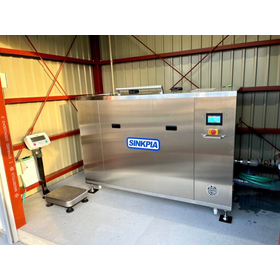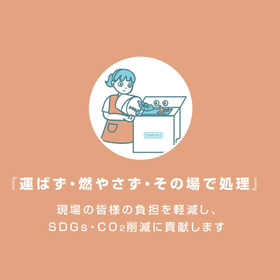[Installation Examples] Kenwakai Hospital and Kenwakai Kanae no Sato
Sink Pia aims to create an environment that does not generate food waste from kitchens, cooking areas, and offices!
We installed the commercial food waste processor "Sinkpia GJ-30" at Kenwakai Hospital and Kenwakai Kanae no Sato in Nagano Prefecture. Typical food waste processors have issues such as odor, noise, and the need for larger machines, making indoor installation difficult; however, our product has achieved indoor installation on upper floors. Work efficiency has also improved, and continuous input into the food waste processor is now easy. [Case Overview] ■ Installed the commercial food waste processor "Sinkpia GJ-30" *For more details, please download the PDF or feel free to contact us.
basic information
For more details, please download the PDF or feel free to contact us.
Price range
Delivery Time
Applications/Examples of results
For more details, please download the PDF or feel free to contact us.
catalog(4)
Download All CatalogsRecommended products
Distributors
"What we want you to discard is the conventional wisdom of food waste disposal machines." The development concept of Sink Pia is to process food waste 'without transporting, without burning, and on-site.' By self-processing food waste within facilities, it contributes to CO2 reduction and the SDGs. Japan's food waste disposal, which has relied heavily on incineration, is at a turning point, and many companies are entering the food waste processing machine industry to meet the needs of the times. However, it is also an industry where many companies have been forced to withdraw due to issues related to research and development costs, as well as a lack of knowledge, experience, and skills. Some have already started demonstration experiments, focusing on the development of microbial houses using biodegradable materials, the development of devices for processing dirty biodegradable containers, and further research on resource recovery such as liquid fertilizers and soil conditioners from decomposed water. We aim to be a company that is needed by more customers and can realize a society that is friendly to the future of the Earth's environment.

























































